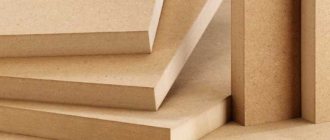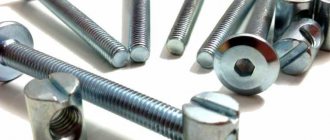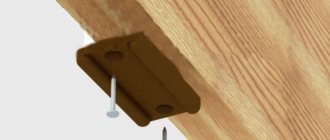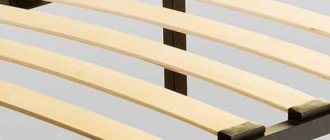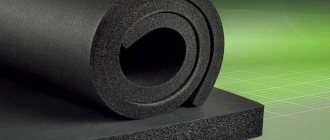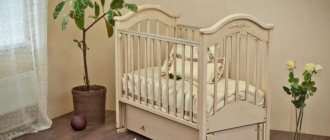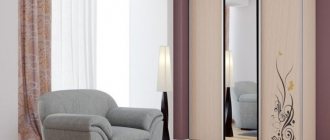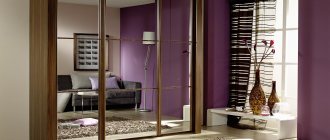31184
Most people mistakenly assume that furniture board is made from waste wood products or pressed wood. They belong to the category of wear-resistant, high-quality furniture components, the texture of which can be of different shades. Their cost is not that high, considering that we are talking about natural material. Thanks to this, wooden panels are extremely resistant to natural and atmospheric changes. Used for the manufacture of facades, doors, as well as stairs. They have high aesthetic indicators.
Peculiarities
Its production is based on the process of gluing wood lamellas, which subsequently undergo several stages of surface polishing. Furniture made from furniture panels belongs to the category of deep-processed products. There are only a few types of furniture panels:
- spliced - in its production, lamellas are used that are glued together;
- solid - solid wood is used for its manufacture.
Spliced
Whole
The use of the latest technologies has made it possible to obtain the most durable, high-quality MDF veneered material, which is assembled using glue. The final product is not inferior in density even to solid wood. It is also worth considering that such technology significantly reduces production costs, and as a result, the cost of the product itself.
For its production it is possible to use:
- oak;
- birch;
- pine trees;
- ash;
- beech;
- maple
A rich assortment will allow you to choose the material that best fits into your existing interior. Products made from oak have the highest strength indicators. Compared to veneer structures, solid wood furniture panels have a number of specific features. It is an environmentally friendly material, compared to the same chipboard or MDF. Furniture made from this material is considered more durable and of higher quality, with a very long service life. Elements of wooden furniture panels are extremely resistant to moisture, while the surface structure is completely preserved.
The main advantages of these products:
- really huge furniture can be made only from this material;
- Glued furniture board will not deteriorate over time. Each part will be compensated by another part;
- the cost of such material is much lower, since the raw materials used are processed quite deeply. In addition, this production technology allows enterprises to purchase ready-made furniture blanks.
DIY cabinet made from furniture board
One of the advantages of furniture board is its affordability, both in price when purchasing and in the ability to independently use it in the manufacture of home furniture from natural solid wood.
The simplest product, which requires nothing more than straight profiles, is a cabinet. Now, observing the sequence, let's begin.
- In order to make a cabinet, we need, first of all, to draw a drawing to scale, which will allow us to clearly calculate the need for materials and accessories.
- For work, we prepare the following tools in advance:
- pencil;
- roulette;
- corner 90°;
- a hacksaw for wood, preferably with a fine tooth;
- drill or screwdriver;
- set of wood drills;
- paint brushes;
- sandpaper No. 1.
According to the calculations made, we buy:
- furniture board in quantity taking into account cutting;
- laminated fiberboard or thin plywood for the back wall;
- various accessories (furniture hinges, holders, couplers, door handles and other necessary devices);
- wood screws (read useful information about choosing screws here);
- furniture varnish.
- Strictly according to the drawing, we proceed to cutting out the purchased furniture panels, while not forgetting the main principle: we measure seven times and cut once.
- We fasten the cut parts with fittings and screws and begin the final assembly.
- After assembly, we clean all dirty places, chips and scratches with sandpaper and coat them with varnish in two layers, while it is necessary to take a break between varnishing for at least two days.
You need to know that when working with furniture panels, you must be careful, since an unprotected surface can easily get dirty or scratched.
Watch the video on how to work with furniture panels
Your entire cabinet, made from natural solid wood with your own hands from furniture panels, is ready. And if the experience was successful, you can not stop and make other home furniture.
Varieties
For the production of furniture panels, various materials can be used, on which the characteristics of these products directly depend.
Oak
This material is one of the most noble. All-lamella furniture panel elements consist of individual components, which are subsequently glued together to form an integral structure. Based on the method of technological processing, a distinction is made between spliced furniture panels and solid panels.
The areas of application are:
- production of steps;
- cabinet furniture;
- as panels for finishing;
- window sills
Fiberboard
To produce wooden panels from fiberboard, various species and some of its waste are used as the main raw material. During the manufacturing process, small fragments of raw materials are ground and then pressed using a hot press. In this case, various components are added that are aimed at improving strength, as well as other basic qualities of the material, these include:
- antiseptics;
- paraffin;
- formaldehyde resins.
Depending on the application, either one or two sides can be made smooth. This is possible thanks to the use of dry or wet processing methods.
When using natural wood in the production, furniture panels become of higher quality, while remaining environmentally friendly. Such raw materials belong to the category of materials of higher quality.
Larch, alder and linden
The advantages of larch include incredible resistance to various fungi, parasites and decay. Moreover, these qualities will be present regardless of the method and period of operation. It, like linden furniture board, is used for decorating facades and residential premises. Don’t forget about the wonderful aroma that this type of tree exudes. It is possible to find products in wenge color. All this makes the material very popular, as well as alder furniture board, which is also in considerable demand in carpentry and construction.
It is possible to use more than 20 different color variations of these materials. Recommended for use when creating environmentally friendly, safe interiors. This material has very little weight, but has excellent density and strength. Shields made from linden are characterized by special resistance to possible splitting, as well as the formation of cracks.
Linden
Larch
Alder
Chipboard and MDF
Boards made from chipboard have been chosen for construction for a long time. The main raw materials are various sawdust, waste from the woodworking and logging industries. The resulting raw material is impregnated with resins that act as an adhesive base. After which the mass is subjected to a pressing procedure. Glued parts can be used to produce any component or component of furniture, for example, wenge color, as one of the most popular color solutions. This makes it possible for many people to use high-quality, inexpensive, and most importantly natural material for the production of furniture and for interior decoration.
Products made from MDF are used for interior decoration and furniture production. Such wooden panels are in great demand compared to the same components made from chipboard and fiberboard. The material has a high level of resistance to various mechanical damage.
MDF
Chipboard
So why should you pay attention to oak furniture panels?
Oak has undeniable advantages among other wood species and has been famous since ancient times for its strength, legendary hardness and durability.
The main advantages of oak furniture panels:
- Does not emit resin during operation
- Best wear resistance
- Strength
- Durability. Unlimited service life
- Aesthetics. Unique design and smell
- Resistance to rotting due to the presence of tannins
- Low flammability
- High moisture resistance
- Healing properties
- Easy to care for
| It is a misconception that substandard materials are used to produce furniture panels. The production of furniture panels is a labor-intensive process. In order to offer the buyer a shield of decent quality, it is necessary to follow the technology of its production and apply maximum care to the process. | |
| 1. First, the edged boards are dried in drying chambers. The internal tension of the lumber is relieved and the wood moisture content is ensured at 8% ± 2%. | 5. To splice the workpieces along the length at the ends along the edges, by trimming the shoulders, toothed tenons are cut, onto which glue with a thickness of 0.1 to 0.3 mm is applied and the lamellas are spliced along the length with the trim to size. |
| 2. After the wood has been brought to the required moisture content, defective areas are opened and the workpieces are calibrated. The base surfaces are prepared for subsequent processing and division into lamellas (for solid lamella panels). | 6. To remove remaining glue, you need to mill the workpieces lengthwise. In this way, precise geometric shapes are obtained and high surface cleanliness is achieved for their subsequent gluing along the width. |
| 3. The blanks are pre-cut, their curvature is eliminated, and they are divided into lamellas of a given length. The ends are trimmed to remove cracks after drying, and defective areas are removed. The blanks are cut into longitudinal bars of a given width. Short blanks without defects are subsequently used for splicing. | 7. How does the shield gluing happen? Glue is applied in a thickness of 0.1 to 0.3 mm to the edges of the bars for gluing across the width into a board on a smooth fugue. |
| 4. After the longitudinal blanks have been cut, it is necessary to optimize them in length and cut out defective areas to obtain defect-free blanks. | 8. To achieve the ideal quality of the shield, it is necessary to calibrate it, remove any remaining glue, if necessary, remove the defective gluing with a longitudinal cut, then glue them again, obtain the required size in thickness and sand the surface of the shield. |
Classification
Thanks to changes in various properties of the base material, wooden panels are now used in many industries. Depending on the gluing method and the type of wood used, the resulting furniture board made of maple or other material can be used for external or internal finishing work. The veneered panel used has a very insignificant thickness of 4-8 cm due to the strong internal stress of the material, which can be significantly deformed during drying. It is glued exclusively along the width.
In this way, manufacturers managed to obtain a truly high-quality material that will not begin to warp over time and that does not contain internal stress. Furniture panels of pine needles or other natural materials are classified according to different areas of application.
To avoid drying out of the base layer, different technologies are used at each stage of production, while the material is impregnated with several impregnations, which increase its main indicators of strength and endurance several times.
Having understood what a furniture panel is, you can start combining it with other materials. Often, in the production of massive laminated boards, plastic, marble or granite are additionally used. The wenge shade is especially popular.
Kinds
Depending on the technology used when assembling lumber blanks, the following types of furniture panels are distinguished:
- with a one-piece fabric design;
- with a spliced web structure, which, in turn, is divided into products:
- with an open spike,
- with closed tenon;
- with single-layer fabric;
- with multi-layer fabric.
According to the method of further use, the produced natural wood canvas is usually further divided into:
- furniture board, which is glued together from lamellas along the entire length of the canvas and has a high-quality surface;
- joiner board with lower quality surfaces that will require finishing.
Color
The technology used in the production of furniture panels makes it possible to create a material of any shade, including wenge, which has been in considerable demand lately. For the production of lamellas, you can use wood of any species. To make furniture, it is enough to glue the finished elements together.
The following rocks are most often used for the procurement of raw materials:
- alder - has over thirty shades of the natural spectrum. It does not require painting, but it would be a good idea to apply an additional transparent layer;
- Birch is a natural color of ivory, but there are varieties of species whose color can be red and gray. It has a layered structure and characteristic wavy lines;
- oak - its natural color is yellow or brown. It has a number of light and narrow stripes that are clearly visible in the photo;
- pine - its inner layers are yellow or almost white. Over time it may darken, becoming reddish or brown.
In the manufacture of facades the following is often used:
- maple, due to its rather dense wood and interesting texture;
- ash, in its structure vaguely reminiscent of oak;
- Sweet cherry or sour cherry has a natural reddish hue and beautiful inclusions of green that are intertwined in intricate patterns.
Cherry
Maple
Ash
Production technology
Furniture panels in manufacturing technology are almost no different from the production of other finished wood products. And without going into details and details, natural wood shields are made in the following sequence:
- The standing wood is cut into boards of a certain thickness and thoroughly dried to 8-12% residual moisture.
- The dried lumber is then cut on special automatic cutting lines into lamellas (bars of strictly defined sizes); if the technology provides, then the ends of the wooden bars are cut into slots to create a more durable longitudinal connection.
- The resulting lamellas are assembled using special devices into panels of certain sizes along the length and width, fastening the bars of wood together lengthwise and crosswise. The joints of the bars are pre-treated with an adhesive solution to give the future product such necessary properties as solidity and strength. Next, this assembled wooden structure is compressed on all sides with clamps and left until the glue dries completely for at least two to three days.
- The resulting semi-finished product of future furniture panels does not yet have a smooth surface and correct external dimensions, so the blanks are further processed on universal four-sided machines. Here the workpiece is planed in both planes and trimmed along the edges to the size of the width of the shield, and then it is trimmed to length.
- At the final stage, the finished furniture panels are sorted and, if necessary, the remaining chips and cracks are repaired using putty in the color of the wood, after which they are sanded on special machines to give the final look.
You can see how furniture panels are made in production in this video
Dimensions
Manufacturers of such materials as pine needles furniture panels or any other natural material were able to cover almost all known industries and areas. All the main dimensions of products that can be offered on the modern market.
| length | width | thickness |
| 900 mm | 200 – 400 – 600 mm | 16 – 18 – 20 mm |
| 1,000 – 1,300 mm | 200 – 600 mm | 16 – 18 – 20 mm |
| 1,400 – 4,000 mm | 600 mm | 18 - 20 mm |
| 1,000 – 2,000 mm | 300 – 400 – 600 – 1,100 mm | 40 mm |
| 2,000 – 6,000 mm | 400 mm | 40 mm |
| 2,400 – 6,000 mm | 600 mm | 40 mm |
| 2,500 – 3,800 mm | 300 mm | 50 mm |
Carpentry furniture panels of category “A”.
| Length, mm | Width, mm | Thickness, mm |
| 1 000 – 3 000 | 400 | 18 |
| 3 400 – 4 200 | 600 | 18 |
| 3 000 – 3 600 | 300 | 40 |
| 3 800 – 6 000 | 600 | 40 |
| 2 500 – 4 500 | 600 | 50 |
Thanks to the specific properties of the furniture panel element of pine needles and other natural materials, it has become possible to use them in the manufacture of furniture, eliminating the need for puttying and veneering the surface, which only needs to be coated with a clear varnish. The furniture panel element pine needles is the most popular.
Dimensions of furniture panels
Furniture board. Varieties. Dimensions. What you need to know when choosing
Kremlev Andrey Aleksandrovich production manager
Using solid wood to make furniture is an expensive option. The cost of panel blanks for the production of high-quality sets and single pieces of furniture is much lower than the price of natural wood. Furniture board, the dimensions of which may vary, is a sheet material for the production of affordable cabinet furniture. The shield is also used to decorate doors and windows (extensions and slopes), wooden stairs (steps, risers, landings, stringers and bowstrings), tabletops and window sills are made from it. It is made from different types of wood and is used multifunctionally in various areas of construction and repair.
What will you learn about in the article?
- Video about cutting and milling panels in our production
- Advantages of panels made of wooden lamellas (bars)
- Manufacturing technology of edge-glued (parquet) and solid-lamella (solid) furniture panels
- Types of furniture panels
- How much does a pine furniture board weigh?
- How to choose a furniture panel?
- How to store furniture panels - recommendations from experts
Video about cutting and milling panels in our production
Panel sheets are in great demand today in large furniture factories, in small private furniture production and among private craftsmen, for creating stairs and other structures, for example, slatted partitions in interior design.
Advantages of panels made of wooden lamellas (bars)
- aesthetic appearance of finished structures;
- environmental friendliness of products;
- unpretentiousness in processing (grinding and trimming);
- unlimited possibilities for implementing design ideas;
- the natural pattern (texture) on the product is preserved;
- lamellas glued into a single structure have high resistance to mechanical damage;
- the shields are not at risk of deformation and shrinkage.
In furniture production today there is no alternative to wooden panels - they are irreplaceable.
Photo 1. Staircase made of furniture board
Manufacturing technology of edge-glued (parquet) and solid-lamella (solid) furniture panels
At the first stage, raw lumber is sent to drying chambers, where its moisture content is adjusted to approximately 6-10%. This indicator is ideal for gluing furniture panel slats. Dry blanks are cut into a block, where they are removed from unevenness, hairiness and any flaws in the edged lumber.
Photo 2. Furniture panel for stairs
Next, the parts are connected by end or end and side parts, for which cutting micro-spikes and grooves is used, onto which glue is applied. Gluing of furniture blanks is carried out under pressure in special clamps. Then the spliced lamellas are sent to a thickness planer, where they are processed on both sides. Finished panels are sanded and packaged in shrink film.
Photo 3. Furniture panel for office furniture
Types of furniture panels
The LesoBirzha online store sells furniture panels (the environmental friendliness of which is beyond doubt) from any type of wood. Opening the shield will take no more than 24 hours. Do you want to buy high-quality sheet material for the production of furniture, stairs and window sills?
We offer you the following options to choose from:
- solid-lamella furniture board (class A/A (without knots) and B/B (with knot)) from hardwood and softwood;
- finger-joint (glued) furniture board (specify dimensions) categories A/A and A/B (pine and hardwood);
- solid lamella panels made of valuable wood species (oak, beech, ash) in grade A/A and B/B;
- solid-lamella furniture panels made of cedar of the V/V grade.
The dimensions of furniture panels made of pine and larch can be viewed in the catalog by opening the desired category. The length, width and thickness of the workpiece are indicated there. Right there you can quickly calculate the cost of the entire purchase by indicating the number of sheets you need and their parameters. The thickness standards for furniture panels are 18(20) and 40. However, when we work out the parameters of the products based on consumer demand, we can make a lot of things to order.
Photo 4. Larch stair steps
How much does a pine furniture board weigh?
The weight of a furniture panel made of oak, ash and any other species is determined by its size. For example, an oak one 28 mm thick, 300 mm wide and 2000 mm long weighs about 9 kg.
The weight of one square meter of 18 mm thick pine furniture board (used for making cabinets, shelves and cabinets, extensions and slopes) is approximately 7 kg. But one square meter is 40 thickness 16 kg.
The weight of the products is also affected by the moisture content of the wood. Managers of the LesoBirzha online store will help you choose the right panels for furniture in Moscow and St. Petersburg.
Photo 5. Oak furniture panel
How to choose a furniture panel?
To answer this question you need to have an idea of what types of furniture panels there are. First of all, pay attention to the category. Our company sells furniture panels of categories A/A (without knots) and B/B (with knots).
- A/A
products are of impeccable quality. To make them, the lamellas are sorted by hand. Seams are barely noticeable after gluing; - Type V/V
- these are lamellas spliced with non-toxic glue. On such boards there are small quantities of “live” knots. There should be no other defects here. The sanding is perfect. - Grade A/B
is an intermediate product between classes A and B. Here, knots are present only on one side (B), and side A is knot-free.
Next, the quality of the furniture board is determined by the method of its manufacture. There are only two types - spliced (glued) and solid.
In the catalog you will find various types of furniture panels. The most inexpensive and common are larch and pine needles. They are most often used to make window sills, extensions, slopes, countertops, beautiful slatted partitions, steps and other elements of stairs.
But materials such as oak, beech and ash are not inexpensive. Products made from it look expensive and rich, thanks to its bright texture. It is used for the production of interfloor stairs, countertops, and luxury furniture.
Photo 6. Office table made of larch A/A
How to store furniture panels - recommendations from experts
We sell furniture boards in shrink film, which protects the products from any negative external influences. The material delivered to your home should be stored in packaged form (just tear the packaging slightly) for a week. This time is necessary for the wood to adapt to the temperature and humidity of the room.
You cannot keep wooden panels in rooms where plaster has recently been applied or cement screed has been poured (current repairs are being carried out). The surface of the walls, floor and ceiling still releases moisture, which will certainly be absorbed into the slats. Another storage condition is that the shields should only wait for their mission in a horizontal position.
Photo 7. Table made from larch furniture board
If you still have questions on the topic of “furniture panel” (standard sizes, price, delivery conditions), find the corresponding section on our website yourself or get information from our consultant managers by phone.
See how we can
April 12, 20202167
Installation of a decorative partition and wooden slats on a wall in an apartment
We often receive requests for the installation of decorative slats and bars, which we have in our assortment.
Installation of a decorative partition and wooden slats on a wall in an apartment
April 12, 2020
2167
May 27, 20191170
Interfloor wooden staircase with winder steps
Another job in our carpentry shop. Staircase with 16 steps. For painting we used Renner materials. An example of how well the project works, the staircase fits perfectly into the interior of the house.
Interfloor wooden staircase with winder steps
May 27, 2019
1170
May 28, 20181233
Wrought iron fences + oak staircase painted in the paint shop
Forged balcony or stair railings are made not so much for aesthetic pleasure, but for practical use. After all, stairs and balconies are always potentially dangerous places if there are pets or children in the house.
Wrought iron fences + oak staircase painted in the paint shop
May 28, 2018
1233
View other works
Areas of use
Often used for the manufacture of facades, panels, cabinets and countertops. Often, furniture in corridors and living rooms is made from maple-based furniture panels. Can also be used to decorate other rooms, such as a bathroom, toilet, bedroom, children's room, kitchen and dining room. It is also used in carpentry and furniture production. At the same time, the cost of one product can be very varied, but it is definitely not more expensive than a natural solid. The use of such furniture will help complement any interior, regardless of the style used in the design. The most frequent requests come specifically for the wenge shade.
Found my application:
- in the manufacture of built-in structures;
- individual elements that can be used when carrying out interior finishing work;
- door panels;
- various types of stairs;
- window sills;
- parquet board;
- for covering ceilings and walls, instead of drywall;
- in the manufacture of ceiling and wall panels and wooden floor beams.

